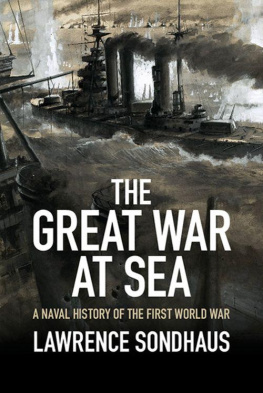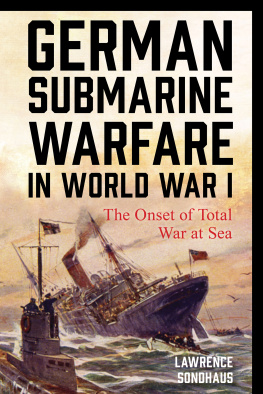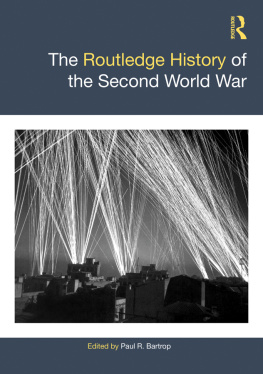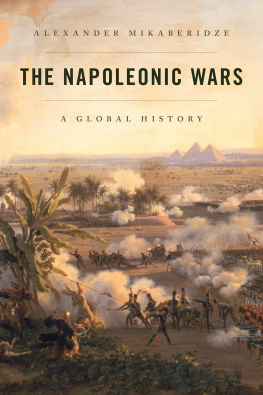World War I
World War I was the cause, catalyst, trigger, and accelerator of revol-utionary change on an unprecedented scale. This is an indispensable new introduction to the global history of the conflict and its revolutionary consequences from the wars origins to the making of peace and across all of its theaters, including the home fronts and the war at sea. Lawrence Sondhaus sets out a new framework for understanding key themes such as the war aims that inspired the belligerents, the technological developments that made the war so deadly for those in uniform, and the revolutionary pressures that led to the collapse of the Romanov, Habsburg, and Ottoman empires. He also highlights the wars transformative effects on societal norms and attitudes, gender and labor relations, and international trade and finance. The accessible narrative is supported by chronologies, personal accounts, guides to key controversies and debates, and numerous maps and photographs.
Lawrence Sondhaus is Professor of History at the University of Indianapolis, where he is Director of the Institute for the Study of War and Diplomacy. His previous publications include Franz Conrad von Htzendorf: Architect of the Apocalypse (2000), Naval Warfare, 18151914 (2001), and Strategic Culture and Ways of War (2006).
World War I
The Global Revolution
Lawrence Sondhaus
CAMBRIDGE UNIVERSITY PRESS
Cambridge, New York, Melbourne, Madrid, Cape Town, Singapore, So Paulo, Delhi, Tokyo, Mexico City
Cambridge University Press
The Edinburgh Building, Cambridge CB2 8RU, UK
Published in the United States of America by Cambridge University Press, New York
www.cambridge.org
Information on this title: www.cambridge.org/9780521736268
Lawrence Sondhaus 2011
This publication is in copyright. Subject to statutory exception and to the provisions of relevant collective licensing agreements, no reproduction of any part may take place without the written permission of Cambridge University Press.
First published 2011
Printed in the United Kingdom at the University Press, Cambridge
A catalogue record for this publication is available from the British Library
Library of Congress Cataloging in Publication data
Sondhaus, Lawrence, 1958
World War I : the global revolution, 19141919 / Lawrence Sondhaus.
p. cm
Includes bibliographical references.
ISBN 978-0-521-51648-8 (hardback) ISBN 978-0-521-73626-8 (paperback)
1. World War, 19141918. 2. World War, 19141918 Political aspects. 3. World politics,
19001918. 4. World War, 19141918 Influence. 5. Revolutions History 20th
century. 6. Social change History 20th century. 7. World War, 19141918 Social
aspects. I. Title. II. Title: World War 1. III. Title: World War One.
D744.S675 2011
940.3dc22
2010051573
ISBN 978-0-521-51648-8 Hardback
ISBN 978-0-521-73626-8 Paperback
Cambridge University Press has no responsibility for the persistence or accuracy of URLs for external or third-party Internet websites referred to in this publication, and does not guarantee that any content on such websites is, or will remain, accurate or appropriate.
Contents
Essay 1 Daily life in Anzac Cove
Essay 2 The trenches and trench warfare
Essay 3 With Lenin aboard the sealed train
Essay 4 Daily life aboard a U-boat
Essay 5 The legacy of the trenches: mind, body, spirit
Illustrations
Text illustrations
Chapter opening illustrations
Essay illustrations
Maps
Text boxes
Perspectives
Preface
The goal of this book is to provide a global history of World War I, useful to general readers as well as to students of history and to historians seeking an up-to-date synthesis of the latest work on the subject. Revolution provides the unifying theme, with each chapter addressing some way in which the war provided the cause, catalyst, trigger, or accelerator for dramatic and enduring change. These include the revolutionary war aims of most of the combatants, the technological revolution that made the war so deadly for those in uniform, the revolutionary sentiment that grew among ordinary combatants (manifested most dramatically in wartime mutinies), and the revolutionary pressures that led to the collapse of the Romanov, Habsburg, and Ottoman empires. Beyond the military, political, and diplomatic realm, the book addresses the wars transformative effects on societal norms and attitudes, gender relations, and labor relations, especially in the urban areas of Europe and America, and on international trade and finance, with the rise of the United States to replace Britain as the center of the global economy.
Among general histories of World War I, this book is distinctive in the manner in which it reflects my insights into the Habsburg empire and the relationship between Germany and Austria-Hungary. The alliance of the Central Powers not only made possible the start of the war, but also shaped its course and outcome more than most historians (especially those writing in the English language) have recognized or acknowledged. Most Anglophone historians of World War I have completely misunderstood Austria-Hungary and the dynamic between the Central Powers and, as a consequence, have to some extent misunderstood the war. Among the competing works, even those marketed as global still reflect either a strong emphasis on the Western Front or a greater depth of understanding of the Western Front when compared to the other theaters of the conflict (the Eastern, Italian, and Balkan fronts, and the action at sea or beyond Europe). I have endeavored to produce a superior summary account, especially of these other theaters as well as the naval war.
With an eye toward making the book as useful as possible to its intended audiences, I have included features that are linked to, but can stand apart from, the main narrative of the text. Most chapters include three to five Boxes providing excerpts of primary documents or voices of individuals, the latter including the broadest possible representation of roles, ranks, classes, and genders, as well as of combatant countries and theaters of action. Seven Perspectives boxes provide examples of scholarly debate on the wars most controversial aspects. Each of the fifteen chapters includes a timeline and captioned illustration, and ends with a list of suggestions for further reading. The number of chapters allows roughly one chapter per week for a course offered in a semester format. The relatively short chapters, further subdivided, should allow instructors great flexibility in assigning readings that match up with their lectures or class topics. Finally, five daily life essays shed further light on the human experience in areas such as life in the trenches or aboard a submarine. Such features, punctuating an engaging narrative, should make this book appealing to general readers as well.
Acknowledgements
I owe a great debt of gratitude to the mentors, colleagues, and friends who have influenced my understanding of World War I over the years, and for the countless exchanges and conversations that prompted me to articulate many of the ideas and interpretations now incorporated in this book. In particular, I thank my colleagues at the University of Indianapolis, Ted Frantz, Joseph Prestia, and Milind Thakar, for their helpful comments on the sections concerning the United States, Romania, and India, respectively. I would like to thank my editor, Michael Watson, for his constructive suggestions and overall role in shaping the finished product.








